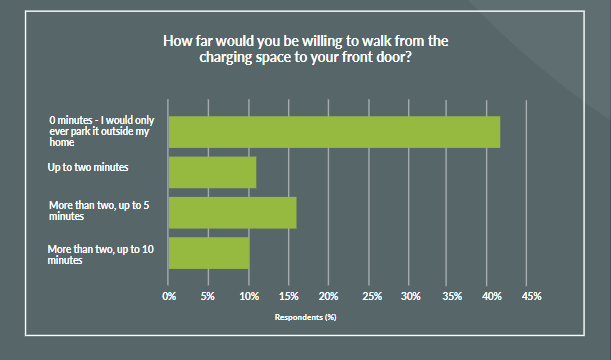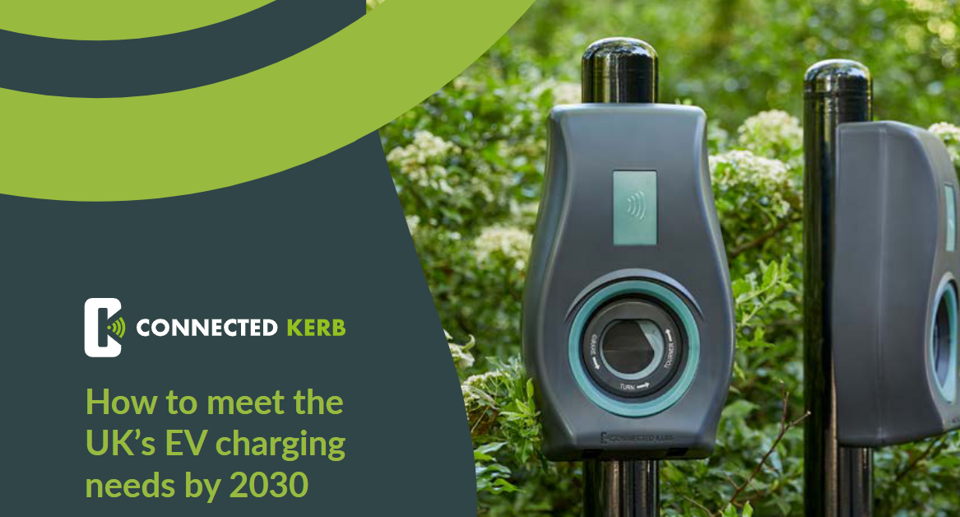Affordable, easy access electric vehicle charging is required on “virtually every residential street”, according to research conducted for a new whitepaper on the growth of zero-emissions transport.
Experts from EY, UKPN, Motability and Mitie Group were among 11 groups to contribute insight to Connected Kerb’s ‘How to meet the UK’s EV charging needs by 2030’ report, which has been published today (March 22).
And it concluded that a “step-change” was needed in the introduction of new charging locations to facilitate the UK Government’s ambitious Road to 2030 plan to ban the sale of all new cars powered purely by petrol or diesel by 2030.
 Chris Pateman-Jones, the chief executive of Connected Kerb, said: “The industry is migrating from early adopters, tolerant of patchy performance, to a mass market of mainstream drivers that rightly expect consistent high performance.
Chris Pateman-Jones, the chief executive of Connected Kerb, said: “The industry is migrating from early adopters, tolerant of patchy performance, to a mass market of mainstream drivers that rightly expect consistent high performance.
“This demands a radical change of mindset amongst national and local government, investors, developers, and charging point providers.”
Connected Kerb is pioneering long-term financing models for roadside chargers and claims to have secured contracts for 10,000 chargers in 2021 alone, including a tender with West Sussex believed to be the UK’s largest ever deployment by a local authority.
Rising demand
Its whitepaper suggested it was tapping into a significant need after EV registrations rose 154% in February and are now forecast to outstrip diesel and hybrid sales by the end of 2022.
It noted that the ratio of EV charge points to plug-in cars deteriorated 31% in 2020 alone, putting Britain’s current ratio (16:1) behind other countries including South Korea (3:1), the Netherlands (5:1), France (10:1), Belgium and Japan (both 13:1).
 Connected Kerb added: “Consumer research released as part of the report indicates that the demands of drivers require affordable and easy-to-access chargers to be installed on virtually every residential street across the UK – with 80% of respondents saying that reliable and affordable chargers located where their car is parked while at home is ‘essential’ or ‘very important’ to their decision on switching to an EV.”
Connected Kerb added: “Consumer research released as part of the report indicates that the demands of drivers require affordable and easy-to-access chargers to be installed on virtually every residential street across the UK – with 80% of respondents saying that reliable and affordable chargers located where their car is parked while at home is ‘essential’ or ‘very important’ to their decision on switching to an EV.”
Time for action
The ‘How to meet the UK’s EV charging needs by 2030’ report identifies five key areas of action to unlock the large-scale shift to EVs:
- Those deploying EV charging must step up their ambitions for EV charging deployments, “think big” and install thousands of chargers, not tens.
- Use an evidence-based approach to determine the size of user base and dwell time and forecast how this will change over time. If most parking is overnight or all day, many 7kW long dwell chargers may be better than a few expensive rapid chargers.
- Longer-term financing: Focussing on future-proofed, long-life durable chargers will unlock long term contracts. 20-year contracts will attract patient infrastructure capital willing to forgo profits for 10 or more years.
- Install ahead of demand: Anticipating how EV use will grow and installing the ‘behind-the-scenes’ ground infrastructure from the start, such as grid connections and passive ducting, enables more flexible expansion once EV uptake increases.
- Inclusivity: There will be 2.7 million UK drivers or passengers with a disability by 2035. All parties must provide sufficient charging that is designed to be inclusive of drivers with disabilities.
- Education and engagement: Lack of understanding about the benefits of EVs remains a key barrier to EV adoption. Focusing on education programmes on the benefits of driving electric can drive forward the transition.
Last month the Society of Motor Manufacturers and Traders (SMMT) called on Government to create a new regulator to accelerate the expansion of the electric vehicle (EV) charge points and boost public confidence in the technology.
It came as the industry body claimed a shortage of charge points was "undermining consumer confidence to make the switch, with range anxiety now replaced by charging anxiety.”
Report contributor Thierry Mortier, global digital and innovation lead for energy at EY, said: “Long term infrastructure finance is the key that will unlock large scale deployment.
“In most cases, delivering quality EV charging, at a price people are willing to pay, comes with long payback periods. Rapids can make a quick buck in a few high margin areas but most EV chargers in residential areas and workplaces will only turn a profit for investors who are prepared to put long lasting kit in the ground and wait years to see EV adoption catch up.
“We have to understand driver behaviour and adopt a roll-out based on those insights, not just where there is traffic today.”
To read Connected Kerb's full report, click here.















Login to comment
Comments
No comments have been made yet.